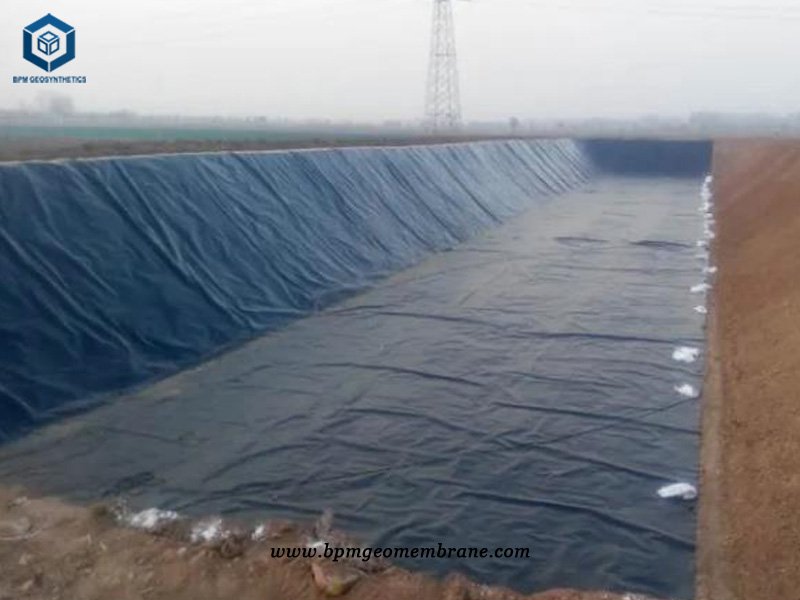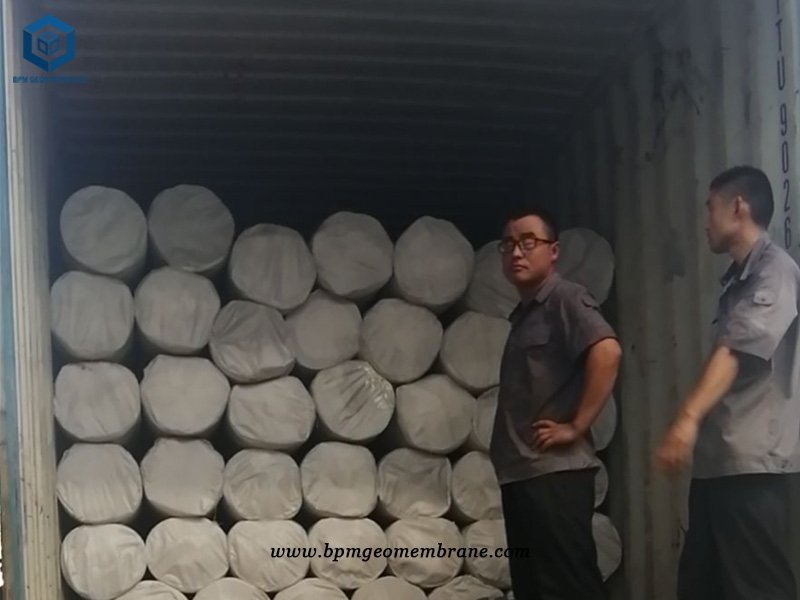Waste Liner for Oxidation Ponds in Philippines
Waste Liner for Oxidation Ponds in Philippines
Waste Liner, HDPE Geomembrane Liner, HDPE Pond Liner
CASE STUDY
- Location – Philippines
- Product(s) – HDPE Geomembrane
- Application – Oxidation Ponds
Issue
Oxidation pond is a natural pond that relies on microbial biochemical action to degrade pollutants in water or an organic wastewater treatment pond that has been artificially trimmed. Oxidation pond treatment is one of the natural treatment methods. An oxidation pond is a small sewage treatment plant. The process of treating sewage is essentially a process of water self-purification. In the purification process, there are not only physical factors (such as precipitation, coagulation), but also chemical factors (such as oxidation and reduction) and biological factors. When the sewage enters the pond, it is first diluted by the pond water, and the pollutants diffuse into the pond water, thereby reducing the concentration of pollutants in the sewage. Then, the dissolved and colloidal organic substances in the sewage are gradually decomposed under the action of the bacteria, algae, aquatic animals, and aquatic plants that multiply in the pond, and the macromolecular substances can be converted into small molecular substances and absorbed into the microorganisms in the body, part of it is oxidized and decomposed, releasing corresponding energy at the same time, and the other part can be used by microorganisms to synthesize new organisms.
With the in-depth implementation of environmental protection work and the advancement of the modernization of farms, livestock and poultry breeding pollution has become a topic of concern to the government and society. For this reason, the state has also closed many seriously polluted livestock and poultry farms. Therefore, reducing pollution has become a survival indicator for aquaculture. The pollution of farms is mainly reflected in the direct discharge of livestock and poultry manure and urine. Therefore, reducing the pollution of livestock and poultry manure and urine has become an important measure for the development of the breeding industry.
Solution
Oxidation ponds generally use anaerobic digestion as the core technology. With the in-depth study of anaerobic theory, people have successively developed a variety of high-efficiency bioreactors, biogas digesters with fermentation and gas storage functions, and HDPE geomembrane waste liner is used. The anaerobic pond is closed.
HDPE geomembrane waste liner has the advantages of large anaerobic fermentation volume, long sewage retention period, large biogas production, and low operation and treatment costs. The construction of oxidation ponds with aquaculture geomembrane also saves sewage treatment fees.
Oxidation pond, also known as biogas slurry pond, fermentation pond. The difference with the biogas digester is that it is not covered. The purpose of the construction of the oxidation pond is to prevent the aquaculture wastewater from flowing into the ground and avoid the pollution of the groundwater. The design and structure of the biogas slurry pool are relatively simple. Before the construction of the oxidation pond, the foundation must be arranged, and the stability of the foundation determines the service life of the project. Small stones, tree roots and other things that may scratch the membrane are not allowed in the pool. It is recommended to use HDPE geomembrane waste line with a thickness of more than 1.0mm for the oxidation pond. In order to reduce the welding seam and construction period, a width of 7 meters can be selected. 7%~10% allowance (anchorage, lap joint and missing repair welding part).
Benefits
The anti-seepage geomembrane waste liner we often say is called HDPE high-density polyethylene geomembrane from the geotechnical material industry. The larger the thickness, the longer the service life, up to 50 years. It is an excellent anti-seepage material for oxidation ponds. In addition, HDPE film has high tensile strength and can be stretched more than 3 times at most. Physical properties of HDPE geomembrane waste liner are as followed.
- HDPE geomembrane waste liner has good anti-corrosion performance, electrical performance, moisture-proof performance, anti-leakage performance and high tensile strength, so it is very suitable for wire and cable, engineering anti-seepage, breeding anti-seepage, oil tank anti-seepage, basement Anti-seepage, artificial lake anti-seepage, landfill anti-seepage, solid waste landfill anti-seepage and other fields.
- HDPE geomembrane waste liner is a non-toxic, tasteless, odorless white particle of high molecular polymer, with a melting point of about 110°C-130°C and a relative density of 0.918-0.965; it has good heat resistance and cold resistance.
Advantages of HDPE geomembrane waste liner
- It has high-strength tensile reflection resistance: its high-quality ductility and deformation ability make it very suitable for swelling or shrinking the base surface, and can reasonably get rid of the uneven foundation settlement of the base surface.
- Organic chemical reliability. The geomembrane waste liner has excellent organic chemical reliability, high and low temperature resistance test, bitumen resistance, oil resistance, acid, alkali, salt and other organic chemical aqueous solutions. It is commonly used for dry wastewater treatment, chemical change pools, and waste disposal sites.
- Anti-aging performance. HDPE geomembrane has high-quality light fastness, anti-ultraviolet light, anti-dissolution ability, good tear resistance, anti-puncture ability, low ductility, small thermal expansion, can be exposed for application, anti-seepage for natural environment Shows very good material.
- Environmental protection. The basic principle of HDPE geomembrane anti-seepage is that the general physical state changes without causing all harmful substances. It is the choice for environmental protection, breeding and domestic water pools.
Summary
The following issues should be paid attention to when HDPE geomembrane is constructed in the sewage treatment pond.
- When HDPE geomembrane is constructed in the sewage pond, is should be avoided being punctured by external force, especially when the construction is carried out at the sewage equipment, the place in contact with the sewage equipment shall be Do it well.
- In the corners of the sewage tank or the deformed joints laid by the aquaculture geomembrane, the length of the joints should be minimized to avoid large-scale joints and cause hidden dangers to the construction quality.
- There are two methods of welding and bonding at the joints of HDPE geomembrane. According to the terrain characteristics of different sewage treatment tanks, different welding methods can be selected.
- The connection between the sewage treatment tank and the boundary needs to be anchored. While fixing the HDPE geomembrane, the anti-seepage quality of the sewage treatment tank is guaranteed.
Specifications of HDPE Geomembrane Waste Liner for Oxidation Ponds in Philippines
- Total HDPE Geomembrane Quantity–15,000 squares meters
- HDPE Geomembrane Thickness– 1.5mm
- HDPE Geomembrane Each roll size is 7m*50m
About BPM
BPM has been specializing in delivering one stop geosynthetics products and solutions to worldwide customers since its foundation in 2007. BPM had provided many types of effective and state of the art geomembranes, geotextiles, geocells, geosynthetic clay liners (GCLs), drainage boards, geogrids to over 81 countries. Our main customers are from Australia, France, Sweden, UK, Hong Kong, Hungary, New Zealand, Poland, Mexico, Ecuador, Brazil, Pakistan, Bangladesh, Thailand, Vietnam, Malaysia, Indonesia, Singapore, Philippines, Sri Lanka, India, UAE, Saudi Arabia, Qatar, Kenya, Ghana, Ethiopia, Somalia, Nigeria, South Africa, Swaziland, Mongolia, etc.






Yellow bag biomedical waste sharp containers to red bags for infectious waste, understanding these distinctions is crucial for compliance and safety.
回复删除